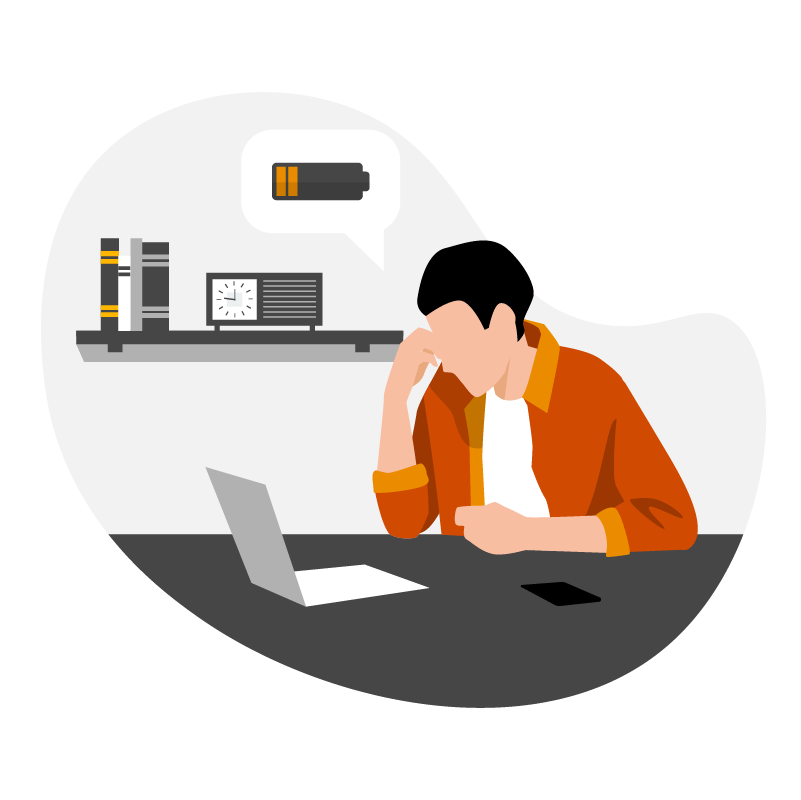{{item.title}}
{{item.text}}

{{item.text}}
The way we work has evolved rapidly over the past 3 years due to the Covid-19 pandemic. The rapid transition to a remote work system was a huge challenge, especially for companies where work in a virtual environment had never been practiced before.
Fortunately, the shifting to remote and hybrid working model, as shown in one of the reports - PwC’s US Remote Work Survey 2021- has been a success. Moreover, as many as 83% of employers say that the shift to remote work has turned out to be beneficial for their companies.
Nonetheless, such a shift entailed a lot of uncertainty. There were plenty of questions to be answered and issues to be solved. From a project management point of view this sudden and unexpected transformation to a virtual way of working has given us space to broaden our horizons. It forced us to take a fresh look at the current ways of working, reevaluate the existing solutions and look for new ones. Now they seem to be the future of project management.
It is commonly understood as a situation when a PM manages a project remotely using a virtual space, or when the PMO team is working with the project manager remotely. This work model had been gaining popularity even before the pandemic, but the outbreak of COVID-19 has raised the trend to unprecedented levels.
Despite the appearances, a virtual project team is not significantly different from a desk-based team. In both cases, team members may come from various business cultures and have different collaborative experiences, but they work as a team, and as such are committed to a common business goal and represent interdependent professional objectives. In the case of a virtual project team, however, we often have additional factors to deal with, namely co-workers may come from multiple geographic locations or even various time zones. Therefore, very often members of such teams lack personal contact and direct communication. So the question is: are there any side effects of managing virtual teams?
Virtual workspaces enable us to cooperate with each other regardless of our whereabouts and without the hassle of relocation which gives a lot of freedom to all (project) stakeholders. There are however also some challenges that cannot be ignored.
One of the main challenges we face is maintaining the best possible communication not only within the team but also within the organization, and preventing miscommunication. It was considered by the respondents to the PwC’s Remote Work Survey as the main reason for the decline in productivity. According to them, miscommunication leads directly to difficulties collaborating (30%) and getting the information they need (30%). Working in the physical office and having direct contact with colleagues on a daily basis allows people to avoid communication gaps. But in a virtual environment, when the work is 100% remote, this is one of the aspects that deserves special attention, therefore the best solutions need to be put in place in order to avoid the gaps. Project teams are exposed to communication issues and to problems with information accessibility. Not everyone knows each other in person which has an impact on the communications track that needs to be planned very carefully.
Although participating in meetings virtually is a great way to increase the attendance and an opportunity to connect with clients from other time zones, it is also a huge challenge. Virtual teams may struggle with collaboration because of lack of physical contact in the office which often causes barriers between the coworkers. That is why the most important thing is to establish a welcoming environment for the coworkers, where they can connect with each other and to give at their disposal some reliable tools enabling them to collaborate at work.
Attention should also be paid to creating appropriate standards of corporate culture and ensuring the high priority of employees themselves, their health, privacy, and work-life balance, which in case of poor work organization may turn dysfunctional.
That is why a good management system, clear communication, a company focusing on the employee, their needs and problems, is so precious and can create a great bond between the company and the employee, leading to their greater engagement and at the same time maintaining an appropriate work-life balance.
We already know that working in virtual workspaces can be challenging, especially in terms of communication, but let’s not forget that at the same time it can also be a great asset for your firm.
Having the opportunity to work remotely in virtual spaces, employers can forgo physical offices, and thereby eliminate huge costs of their maintenance. Employees also benefit from this financially, as staying at home they can save on daily commuting, what's more, they care about the environment by reducing the amount of exhaust gasses produced into the environment. Additionally, thanks to working in a virtual environment, meetings take place online, we can share documents online without using paper and without printing - organizations save paper consumption costs, while taking care of the environment.
The possibility to arrange your own workspace in the privacy of your own home is tantamount to the possibility to control any distractions that are impossible to be controlled in an office full of people. This entails greater work comfort, thus positively impacting productivity and higher work quality. According to PwC’s Remote Work Survey: “75% of employees said they were at least as productive [at home] as they were pre-pandemic.” This means that not only did a huge majority of interviewees maintain the productivity standards from before switching to work in virtual workspaces, but they also enhanced it.
Finally, working in a virtual environment gives us the flexibility that lets us maintain a better work-life balance. The freedom to choose a workplace and the chance to adjust the work scheme to their own preferences also has a positive effect on the comfort and satisfaction, which triggers a healthy approach to performing duties and greater commitment. A happy employee is a grateful employee.
Localisation issues are no longer a limitation when it comes to building the best team of people with the right predispositions and skills. Virtual teams can be built regardless of the distance between the individual team members. Virtual project management does not require the physical presence of PMO in a specific place, because everything happens in a virtual space. Thanks to this, the pool of talents that leaders can use is unlimited. The search for the right person for the right place is no longer burdened with the problem of localization, which often used to entail the need for the employee to relocate and many times even completely eliminated a good candidate. This way the virtual teams gain the chance to gather steam, and thus benefit from cultural diversity and a multitude of new, fresh views on management methods and different problems. Virtual workspaces enable us to cooperate with each other regardless of our whereabouts and without the hassle of relocation which gives a lot of freedom to all (project) stakeholders.
Since the virtual teams cannot gather physically, there is a self-existent need to have appropriate tools that will properly support and facilitate project management. Here is an overview of some of them that really improve the proper functioning of projects, not only in VPM.
Providing technological and communication solutions, and introducing common communication standards such as daily huddles and regular follow-up meetings, are crucial. There are tools that allow communication - which is a challenge for virtual projects - to become something natural, something that will allow the free flow of knowledge, thoughts, and solutions in real time.
At PwC, we put a lot of emphasis on technological development, because we believe that without the right tools, it is hard to work properly.
Peterson, Stevie & Stohr, Velda, “Management Assistance Programs for Non-Profits”
“PwC Remote Work Survey” January 12, 2021 data: https://www.pwc.com/us/en/industries/financial-services/library/balancing-remote-and-in-office-work.html
https://www.globalization-partners.com/blog/6-key-remote-work-trends-to-improve-employee-experience/
https://www.businessnewsdaily.com/8156-future-of-remote-work.html
https://www.umsl.edu/~sauterv/analysis/488_f01_papers/rolfes.htm
https://www.ntaskmanager.com/blog/virtual-project-management/
https://www.wrike.com/project-management-guide/faq/what-is-a-project-in-project-management/
https://www.pwc.com/us/en/library/covid-19/assets/pwc-return-to-work-survey.pdf
https://workspace.google.com/the-future-of-work/virtual-collaboration/
https://www.microsoft.com/investor/reports/ar12/financial-review/business-description/index.html
https://financesonline.com/top-15-project-management-tools-virtual-teams/
https://www.indeed.com/career-advice/career-development/challenges-of-virtual-teams
{{item.text}}

{{item.text}}
Marysia Lachowicz
Oliwia Topka










